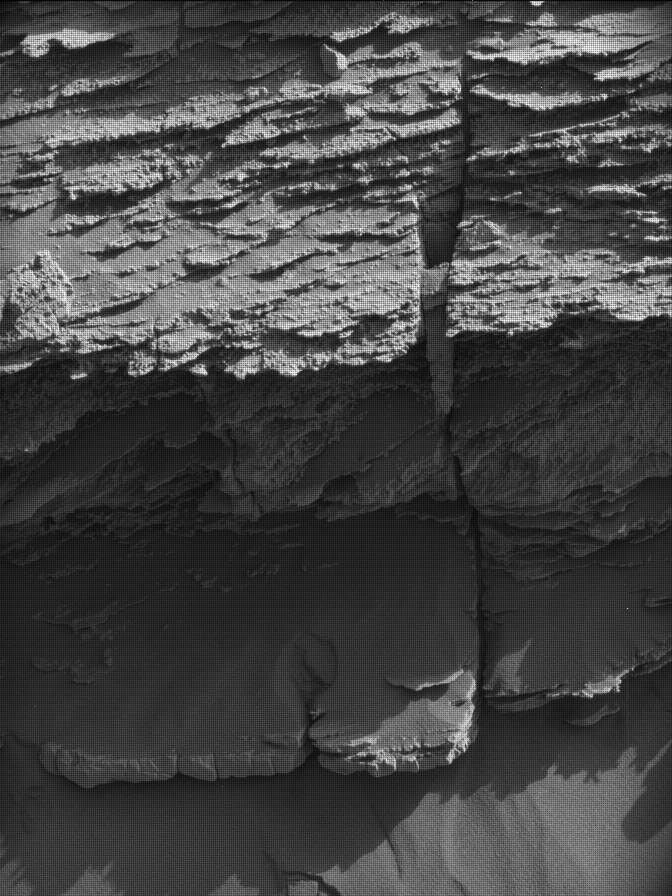The final two pebbles hitching a ride aboard our rover’s bit carousel are gone but not forgotten. I’ll give you the latest on why they are gone and then tell you why we are not forgetting them – or the two other pebbles that made our first month of 2022 a busy one.
Confirmation
We had more than a suspicion the rocks had departed the Perseverance rover on Sunday when imagery of the bit carousel came down after a short 16-foot (5 meter) drive to a nearby rocky outcrop. That drive, which took place on the previous sol, was designed to get us to a small rocky outcrop that would place the rover at an angle that could be beneficial for ejecting the pebbles.
To be thorough (because we Mars missions like to be), we did a full rotation of the bit carousel in both directions, with the rover oriented in a 13.2-degree roll to the left, and we found nothing hindering its progress. We also ran the rover’s percussion drill to induce vibration, hoping to shake any possible remaining debris free from the bit holder. Finally, we docked the drill to the bit carousel and dropped off the bit.
With this last step we are happy to announce our sampling system is up and running and ready to go, which is a good thing, since we’re going to use it right away. The science team wants another sample from the rock they call “Issole,” so we drove the 16 feet (5 meters) back and are now in the process of collecting one. Our Twitter feed @NASAPersevere will update you on that progress.
Perseverance Playbook
As you know, Perseverance is the first sample caching mission on the Red Planet. We did a great deal of testing before we got there, but Mars is Mars. The place is cold, unpaved, far away (about 205 million miles [330 million km] today), and with unexplored, sometimes uncooperative stuff over every hill and around just about every boulder. And that lack of cooperation sometimes extends to the rocks our science team wants to sample.
Those of you who have been following us – and we appreciate it! – know that our first attempt to core a rock was less than satisfying, with the sample crumbling before we could collect it. But we learned a lot from rock target “Roubion,” and we modified our playbook to understand better how to collect samples – and from which rocks. This new “pebbles in bit carousel” affair has also allowed us to make additions to our sampling playbook. If we encounter a similar scenario down the Martian road, we should be able to get back on track more quickly – which is good, because Jezero Crater is simply amazing and I can’t wait to see what awaits us on the other side of the next hill.
Written by Avi Okon, Sampling Operations Deputy Lead at NASA's Jet Propulsion Laboratory




































